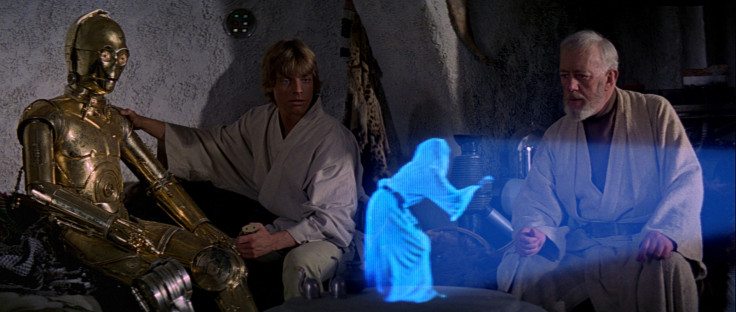Star Wars 3D holograms now possible with screens made from graphene and lasers

Optical researchers from four Australian and Chinese universities have made a holographic breakthrough by finding a way to make star Wars-esque 3D displays that can be viewed by the naked eye without wearing 3D glasses.
Researchers from Swinburne University of Technology, the Beijing Institute of Technology, Griffith University and Tsinghua University have succeeded in combining a mesh made from graphene oxide with lasers in order to create a pop-up floating image that looks similar to Princess Leia's urgent message transmission for Obi-Wan Kenobi in Star Wars.
Using a photonic process that does not require heat or a change in temperature, the researchers were able to create nanoscale pixels that are able to bend light as it passes through in order to create optical effects.
"If you can change the refractive index you can create lots of optical effects," Professor Min Gu, Director of Swinburne's Centre for Micro-Photonics at Swinburne University of Technology said.
"Our technique can be leveraged to achieve compact and versatile optical components for controlling light. We can create the wide angle display necessary for mobile phones and tablets."
What is graphene?
Graphene is a one-atom-thick material made of carbon atoms arranged in a honeycomb lattice that is 200-times stronger than steel, more conductive than copper and as flexible as rubber.
It has been touted as a "wonder material" by scientists for its remarkable properties and vast range of uses, which include everything from flexible smartphone screens to artificial retinas.
Graphene has been hailed as a revolutionary material and over the last two years, scientists have been coming up with new and better ways to use it to create next-generation technology such as flexible smartphone screens, artificial retinas, contact lenses, processor chips and even non-corrosive paint.
However, the idea for using graphene to create holograms is a new one, and currently scientists working on holograms are experimenting with acoustic sound waves and ultrasound, as rendering holograms from video footage or 3D animations is currently extremely expensive, and there are concerns that lasers will risk damaging viewers' eyes.
The graphene 3D hologram researchers do not seem concerned about their use of lasers however, as the lasers are reacting with the graphene mesh rather than the human eye.
They say 3D holographic displays could have useful applications in everything from medical diagnosis to entertainment, remote education and military devices.
Dr Xiangping Li, also of the Centre for Micro-Photonics at Swinburne said: "Owing to its atomic layer thickness and high mechanical strength, the use of graphene in mobile display units for flat two-dimensional displays is burgeoning.
"Our technology could also underpin future flexible and wearable display devices and transform them for 3D display."
Their paper, entitled "Athermally photoreduced graphene oxides for three-dimensional holographic images" has been published in the journal Nature Communications.
© Copyright IBTimes 2024. All rights reserved.






